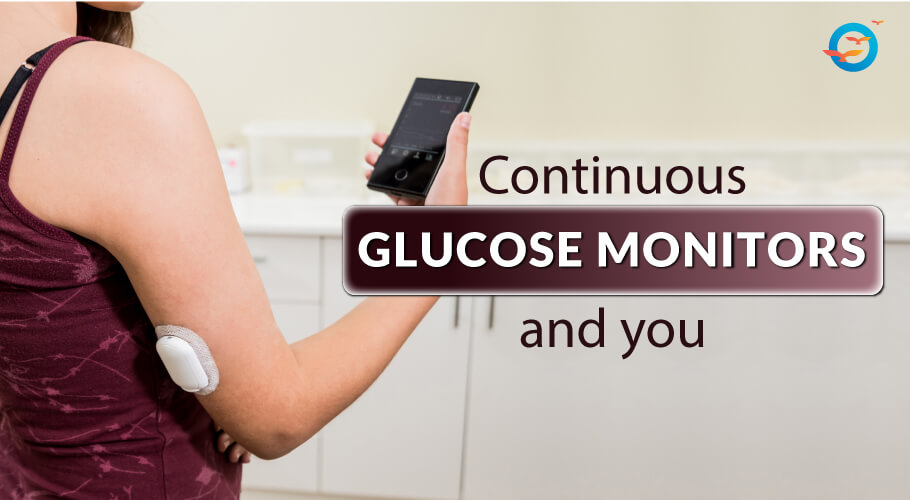Continuous Glucose Monitors - Things you need to Know before use | Freedom from Diabetes

What is Continuous Glucose Monitor?
Glucose Meters play a key role in helping diabetics keep track of their blood sugar levels (BSL), but they may not be practical when patients need to keep a closer eye on their readings. Continuous Glucose Monitors (CGM) fulfill this need seamlessly, taking readings every 10 to 15 minutes.
CGMs use tiny sensors inserted just under your skin to collect readings, These are then sent to a portable wireless monitor via a tiny transmitter on the sensor. The sensors are inserted painlessly just under the skin—usually your tummy—or stuck to the back of your arm, where it’s less likely to be dislodged accidentally.
The data gathered and sent by the sensors allows your doctor to get a more complete picture of the patient’s diabetes, helping detect patterns that can help the doctor modify treatment to better manage the patient’s condition. These devices usually require a prescription from the doctor but have become fairly commonplace in many countries.
How Do Continuous Glucose Monitor work?
The sensors measure the glucose inside your body, sending the information via transmitters to a monitor that is usually clipped to the patient’s belt, rather like a pager.
In the event the patient’s blood sugar drops dangerously level or rises to a predetermined high level, an alarm will sound on the monitor. Earlier editions of the CGM sent readings only to the doctor, but with technology becoming more user-friendly, modern devices allow patients to view the readings.
There are now many apps developed to pair the CGM with smartphones, for better real-time measurement of BSL. The data can also be downloaded onto a computer or connected device. Analyses of the data help the doctor determine the ideal treatment plan, for instance:
- medicine/insulin dosage
- best time for the dose to be administered
- effect of the medication—so your doctor can modify as needed
- exercise routine—what, when, and intensity
- meals and snacks—type, timing, quantity
Benefits of a Continuous Glucose Monitor?
Traditional glucose meters can only show you your blood sugar levels at the time when the reading is taken, Continuous Glucose Monitors on the other hand record the patient’s blood sugar levels throughout the day.
They can thus show highs and lows across a longer period of time. With traditional glucose meters when BSLs drop dangerously low or track high, they often go undetected.
Similarly, early morning spikes in BSL—known as the dawn phenomenon—can be tracked. (everyone experiences these spikes, but they can go dangerously high for diabetics. To learn more about the dawn phenomenon and what you can do, read our post: why is my morning sugar so high.
Continuous Glucose Monitors can also tell you how well your diet and exercise plan is working, so it can be modified accordingly. It also lets your doctor determine the efficacy of the prescribed medication, allowing necessary modifications.
Should you use Continuous Glucose Monitors?
Not everyone needs a CGM. If your treatment is working and your regular readings were taken on your glucometer show a consistently normal reading, you’re good to go.
However, if there are radical jumps and drops in your BSL and no clear reason why; or if you suffer from very low BSL (hypoglycemia) or very high levels (hyperglycemia), a CGM can definitely help. And you should talk to your doctor about using one.
CGMs are a boon to parents and caregivers who may be unable to remain in close proximity with the patient.
Disclaimer:
This Blog solely serves our marketing purposes, for Authentic knowledge for this topic, Please join our upcoming Discover Reversal Session

